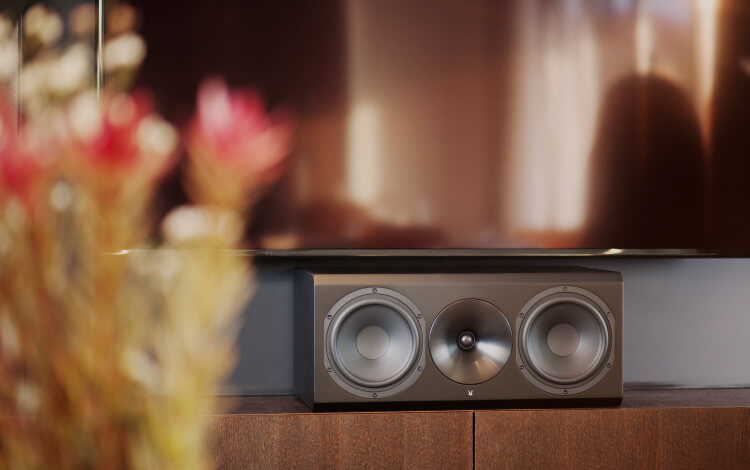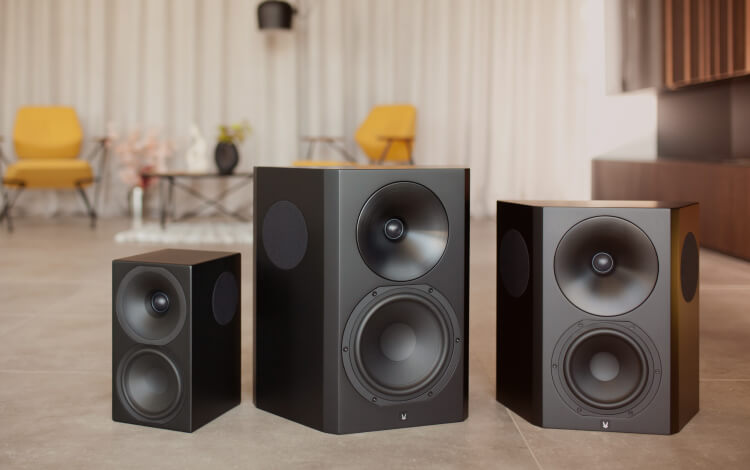Floor-Standing vs. On-Wall Speakers: Weighing the Options for Your Home Theater
Introduction
When setting up your home theater, the choice between floor-standing and on-wall speakers is one you’ll likely face early on. Each type offers distinct advantages and challenges that can significantly influence your cinema experience. This comparison will help you understand the trade-offs and determine which speaker type will best suit your home cinema’s audio needs.
Floor-standing speakers, also known as tower speakers, are traditional, freestanding units that offer powerful performance. On-wall speakers, by contrast, are mounted directly onto your walls, providing a clean, space-saving solution. As we delve into the topic, consider factors like your room’s size, acoustics, and your audio quality expectations.
It’s not just about sound, as aesthetics play a part too. You should assess how the speakers will complement your cinema room decor and whether you prefer the commanding presence of floor-standers or the seamless integration of on-wall units. Let’s explore the nuances and decide what’s best for your cinematic sanctuary.
Floor-Standing Speakers: An Overview
Floor-standing speakers have been a staple in home theaters for years. Their larger enclosures typically allow for multiple speaker drivers, which can produce a broader range of sound frequencies. From deep bass to crystal-clear highs, tower speakers can cover the full audio spectrum without always needing additional subwoofers or other speakers.
Due to their size, they can project sound effectively across larger rooms, filling the space with dynamic audio. They’re often considered the audiophile’s choice for their ability to deliver deep, nuanced, and detailed sound. A significant advantage of floor-standing speakers is their versatility. They can work well in a stereo setup or as the front left and right channels in a surround sound system.
However, these speakers can require more floor space, and depending on their design, they may not blend in as seamlessly with modern decor. Additionally, they may have unique placement requirements to optimize sound, which can be a consideration in smaller or irregularly shaped rooms.
On-Wall Speakers: An Overview
On-wall speakers offer a modern, space-saving alternative to traditional floor-standing models. By mounting them on the wall, you reclaim floor space and can achieve a more discreet, built-in look that appeals to minimalists and those with contemporary design sensibilities.
These speakers are designed to complement flat-screen TVs and can be an excellent choice for those who prefer not to have their A/V equipment dominate the room. While they may not deliver the same level of deep bass as tower speakers, on-wall models are engineered to provide clear, distinct sound that works well for dialogue and ensures a cinematic experience.
The installation of on-wall speakers may require additional work, such as hiding wires within the walls for a clean look, which could involve professional support. Calibration might also vary to compensate for wall reflections or other acoustical challenges posed by wall mounting.
Sound Quality and Performance
A primary concern for any home theater enthusiast is the sound quality. Floor-standing speakers are often perceived to have superior sound quality due to their large cabinets and multiple drivers, which can create a rich, enveloping sound field. They’re particularly good at reproducing low frequencies, making them ideal for both action-packed movie scenes and intricate musical performances.
On the other hand, on-wall speakers have made significant advancements in technology and design. Many models now incorporate sophisticated driver arrangements and acoustic tuning to offset their smaller size and on-wall position. The result is a surprisingly full and dynamic sound that can rival traditional setups, especially when incorporated into a well-designed surround sound system.
Ultimately, the ‘best’ sound will depend on personal preference and the specific characteristics of your listening room. Some may prefer the assertive bass and room-filling capabilities of floor-standers, while others may prioritize the space efficiency and aesthetic integration of on-wall speakers, finding their performance entirely satisfactory for immersive viewing experiences.
Aesthetics and Living Space
Your home theater should offer a perfect blend of function and form. Floor-standing speakers can serve as a focal point of a room’s design, boasting an array of finishes and styles to match your decor. Their physical presence is often associated with a serious home cinema setup and can be a statement to guests about your dedication to the audiovisual arts.
Conversely, on-wall speakers provide a tidy, unobtrusive look. For those living in apartments or smaller spaces, these speakers can preserve the aesthetic of the room without making it feel crowded. They can be painted to match the wall color, made nearly invisible to the casual observer, and offer a high-tech vibe that aligns with contemporary design trends.
The decision here is as much about personal style as it is about audio quality. Consider how the speakers will fit into your lifestyle and your living space. Do you want your speakers to start conversations, or would you rather they disappear into the decor, letting the screen take center stage?
Conclusion
Both floor-standing and on-wall speakers have their own set of benefits and can be the right choice for different scenarios. Your decision should be informed by the size and shape of your space, your sound quality expectations, and your aesthetic preferences. Listening to a variety of speaker types in action, if possible, is always recommended before making your final decision.
Remember that in the world of home theaters, there’s rarely a one-size-fits-all solution. Your home cinema is a personal space designed for your enjoyment. The right speakers are the ones that deliver the experience you desire, whether that means the power and presence of floor-standing speakers or the sleek, space-saving nature of on-wall models.
Whichever route you decide to take, carefully consider the integration of the speakers into your system, the calibration needed to achieve optimal performance, and the practical implications for your room. With thoughtful consideration and planning, you’ll be able to create a home theater audio experience that rivals even the best commercial cinemas.









